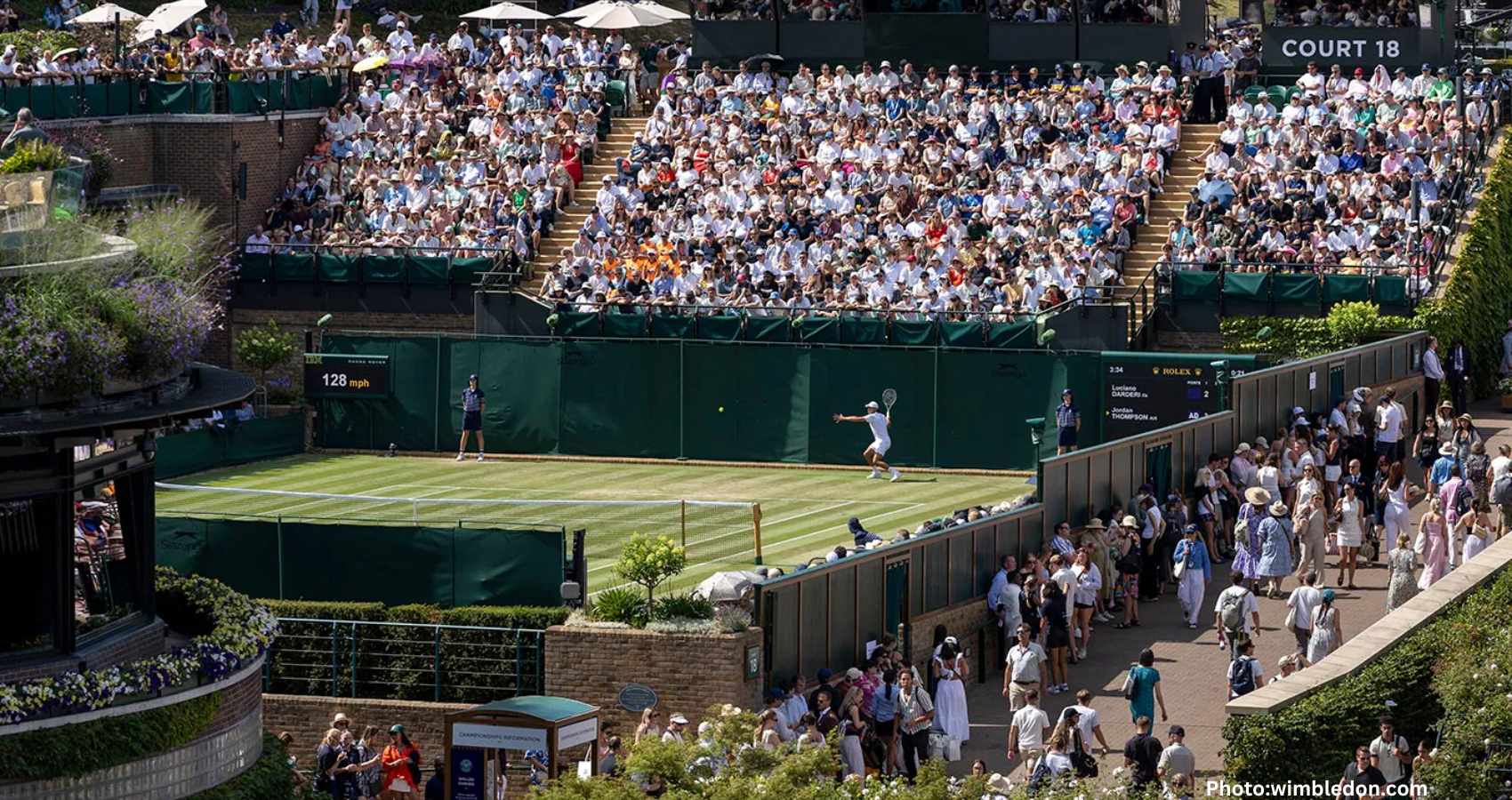The All England Lawn Tennis Club has decided to replace human line judges with an electronic calling system at Wimbledon, ending a long-standing tradition.
The historic lawns of Wimbledon have witnessed a significant transition as organizers adopt an electronic calling system, phasing out the use of human line judges. The change marks a poignant shift for the tournament, which has been synonymous with the presence of these officials clad in distinctive Ralph Lauren uniforms.
Pauline Eyre, a former line judge at Wimbledon, nostalgically recalls stepping onto the grass courts for the first time at age 21, not as a player, but as an official. Despite describing herself as a “pretty bad junior player” who never advanced far in local tournaments, Eyre achieved her career’s peak as a line judge at Wimbledon. However, this chapter closes as technology steps in to take over these duties.
“At the end of the day, a tennis match is sport, and sport is about people,” Eyre told CNN Sports. “And I don’t think technology necessarily makes everything better. I don’t think it’s improving the quality of the line calling because line calling was always excellent.”
The shift toward electronic line calling (ELC) aligns Wimbledon with other major tennis events. While the ATP and WTA Tours, along with the Australian and US Opens, have embraced this technology, Roland-Garros remains the lone grand slam using human officials for calls. The decision at Wimbledon has stirred mixed reactions, highlighting the balance between tradition and technological progression.
The All England Lawn Tennis Club (AELTC) chief executive, Sally Bolton, noted that the change is designed to provide “maximum accuracy in our officiating” and ensure players experience “the same conditions” as in most other events. Andrew Jarrett, Wimbledon’s tournament referee between 2006 and 2019, argued that the adoption of electronic systems is “almost certainly correct,” citing improved accuracy over human eyesight.
Despite its advantages, Eyre and other purists grieve the disappearing role of line judges. “You have to be a bit of a saint to want to spend your weekends umpiring children’s tennis matches without the carrot of Wimbledon at the end of it,” she remarked, highlighting the reduced incentive for aspiring officials.
Players’ opinions on the shift vary. Women’s top seed Aryna Sabalenka expressed a slight preference for electronic systems due to their clarity, while defending women’s champion Barbora Krejčíková and American star Frances Tiafoe prefer the traditional method that allowed for line call challenges.
The transition to technology is not without hiccups. An automated “out” call during a recent match caused confusion and laughter among spectators, demonstrating some imperfections in the new system. Similarly, concerns about the volume of electronic calls have been raised, with some players claiming they are not always audible, unlike the clear shouts from human judges.
Despite these challenges, Wimbledon’s move away from human line judges signifies a broader trend within tennis, emphasizing technological accuracy over tradition. Yet, many, including Eyre, remember line judging with fondness.
“We just wanted to be part of something we loved,” said Eyre. As she transitions from line judging to stand-up comedy, she reflects on the unique aspects of her former role that made it so special and, perhaps, now missed.
The storied charm of Wimbledon’s human line judges is likely to be remembered with nostalgia—an emblem of the tournament’s rich history now absorbed into the annals of sporting evolution.
Line judges at Wimbledon, once thought of as merely functional, now hold a place in tennis history cherished by traditionalists who keenly feel their absence.

